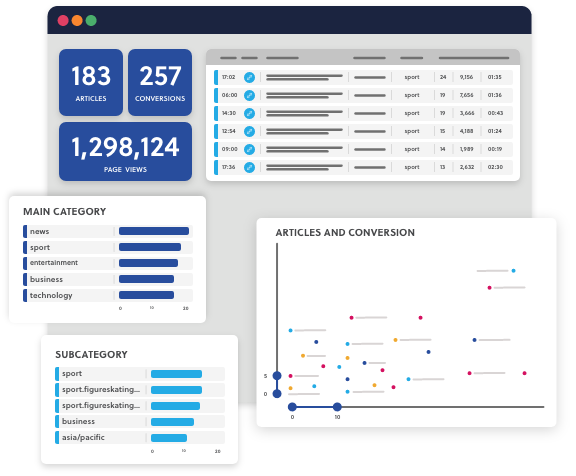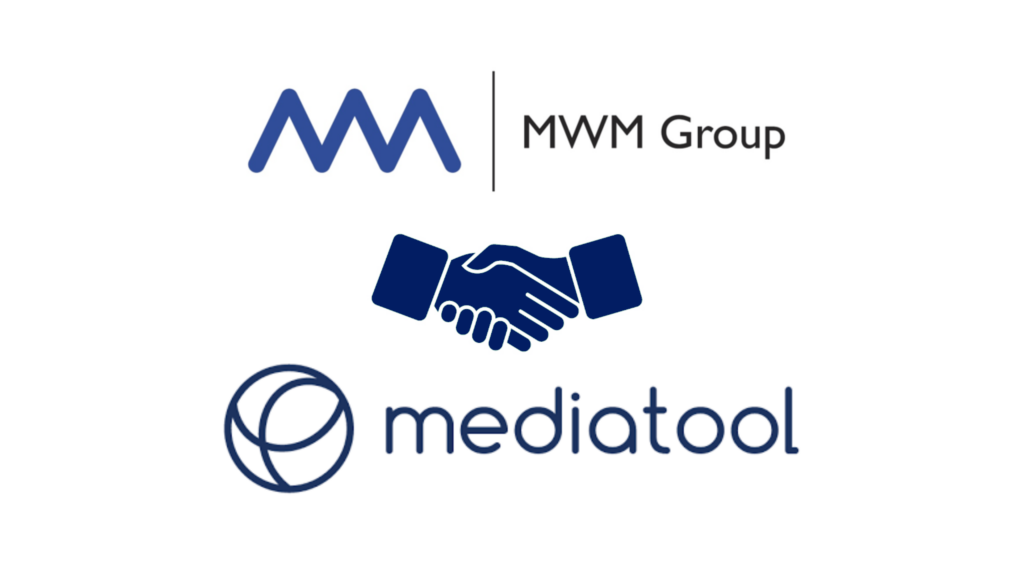MWM celebrates 20 years of leading media workflow management: Coming full circle
MWM was first set up to offer complete production management for newspapers – from newsroom to mailroom. That was 20 years ago, and the concept was attractive, but the industry wasn’t quite ready to commit to the reality. Today, with MWM’s offering extending to managing reader data, no-one questions the value of full real time workflow and data management. We’ve come full circle.
Tony Svensson, main owner of MWM Group, first walked into the company offices during the 2003 Christmas lunch. He’d been appointed by one of MWM’s VC owners to evaluate the company. As he started working at MWM in January 2004, an early insight was that selling the concept of a comprehensive production management system to the newspaper industry was a challenge. “It was sort of seen as nice-to-have rather than need-to-have – the ROI wasn’t compelling enough for most publishers. Looking back at it, we were early with a production control offering. Many newspapers were still doing really well and production directors tended to think that gut feeling was good enough.”
At the Christmas lunch, there had been a letter waiting for Tony on his desk. “It was from Christer Olsson at Denex who wanted to sell part of their company – CopyTrack – to us. I immediately thought it would be a good fit.” But it would take a year before the actual acquisition would take place. There followed a couple of years where the MWM team worked on improving the different parts of the MWM offering. The idea was to make each module saleable separately. The acquisition of Denex was finalized in June 2004 and CopyTrack, a real-time press and mailroom management system was added to the offering. But there was still a link missing, Tony identified an enterprise system, built on the Microsoft AX platform, from a Västerås company called ITK. The system was focused on print production; pre-calculation, planning, follow-up, post-calculation and accounting. “In some ways it was a system similar to MWM, but it was more focused on just the pressroom. I saw how it would match well with what we were doing.”
There were a number of things going on in parallel with Tony driving the new module focus at MWM. His wife Charlotte was running a consulting firm, Invoiceit. Tony was keen to buy the ITK enterprise system, as well as Denex Inc (the US part of the Denex business). At the same time, MWM’s VC majority owners thought the company was too small and wanted out.
As a result, in 2007, the Svenssons acquired MWM and merged it with Invoiceit. They also bought ITK’s system and Denex Inc. The consolidated company had a systems unit, run by Tony and a consulting vertical, lead by Charlotte. The system they offered was what has evolved into today’s Print 365.
One of MWM Consulting’s early jobs was to help Bonnier owned Dagens Nyheter implement a new advertising system from US based Atex. The new platform had no Swedish invoice module, expertise Invoiceit had from years developing billing systems at several larger businesses, such as Telecom operators, energy and housing players. Philip Pettersson managed the project at DN, and a Swedish invoicing module was built. After some time Dagens Nyheter had new leadership, notably CEO Gunilla Herlitz. Gunilla was keen to build a digital customer business and the work done at Dagens Nyheter starting in 2011 constituted the foundation of our current Media 365 solution enabling, among other things, a single view of digital customer data from multiple systems.
MWM’s third product MWM Parking has its roots in an early consulting project post the MWM–Invoiceit merger. With that knowledge base of efficient parking processes, MWM could answer to Parkering Malmö’s public tender with our own AX based enterprise system, and we won the order. There are currently two MWM Parkering implementations beyond the one in Malmö.
150 customers, 200+ installations
In 2003 there were a handful of customers. Today there are 150 around the world, and we keep growing. “Today we’re mainly pushing Media 365 in Sweden and Print 365 in India and the States, where we have 28 of the 50 largest media companies as customers. But both the Indian and the US markets are ready for Media 365, that’s where we’re moving next.”
In parallel, MWM has established operations in Germany, with Jörgen Karlsson and Björn Nickau working the German speaking markets since 2016. “We have some big customers in Germany already, including Burda, Schenkelberg and Regensburg. But it’s a big market, with over 100 newspaper printers and a huge commercial print market, so there’s a lot we can do for our customers with the expertise we have ” says Tony.
Both Print 365 and Media 365 are today in the future proof Microsoft Azure cloud. Where Print 365 is a mature product, particularly in Europe, with Media 365, MWM is still in a growth market. Competition comes mainly from in-house developers in the publishing houses. “The advantage we clearly have is our years of experience and best practices from our many clients, which when shared with new customers can have them up and running faster. I believe there’s still a huge untapped market potential for publishers with their fantastic platforms of hundreds of thousands of digital customers.”
“Time has really worked for us in the newspaper market globally,” he continues. “The news publishing industry is under pressure, and unlike 15 years ago, they now understand the need for data informed decisions moving forward. Keeping the 360 view of end-customers as well as securing focus in production processes, by pre-calculation, real time follow-up and post-calculation – the ROI we provide is indisputable. We’ve come full circle in a way – we, and our customers, are back to a focus on the complete media production workflow management.”

From proud pioneering roots
The seed of what was to become MWM was sown at the Royal Institute of Technology, KTH, in Stockholm back in 1991. Two young PhD students set out on a journey together, a journey which was to revolutionise newspaper production and even lay the foundations for a global standard on the way. One of the doctoral students was Johan Stenberg, MWM co-founder and first CEO, and this is his story.
Johan Stenberg’s and his research colleague Stig Nordqvist’s (1965–2014) story is one of daring to challenge conventional thinking and understanding the power of technology to drive efficiencies and cutting lead times. Of course, as they set out on their working journey, they didn’t know that was going to be the case. Nor, a few years later, did they realise they had created the industry’s first data warehouse – the foundation of today’s MWM Print 365 and more recent MWM Media 365. “All we did was gather statistics f
or reports and analyses; cleaning up and unifying the data from all the systems involved and storing it in a database. There was no such thing as a data warehouse in my world back then, but of course that’s effectively what we’d created,” says Stenberg.
The story starts in 1991, when Johan Stenberg was hired as a PhD student at KTH (the Royal Institute of Technology). His diploma work advisor Stig Nordqvist had started his PhD project the year before and the two soon realised their research topics could be combined. Nordqvist was looking at how digitisation was affecting the work organisation in newsrooms, while Stenberg was focused on the parallel development in print production.
“We were dealing with what was to become the internet explosion, with technologies like Ethernet and TCP/IP deep in the infrastructure suddenly enabling communication between systems.”
Stenberg and Nordqvist visited the main Volvo factory in Gothenburg to learn how the manufacturing industry was leveraging the new technology. Nordqvist was intrigued, and the two began collaborating. By 1992 they had written their first joint article on how the new technology enabled much simpler exchange of data between systems.
“As a team, we were a perfect match. Stig was a visionary, forever catching on to brand new ideas. I was more about turning them into practice. Sure, we had lots of discussions, but there was definite cross-pollination going on. I couldn’t have done what we did alone, and I don’t believe Stig could have either.”
The two students set out on a road trip to map newspaper production processes around Sweden and in the US. By now they had the support of TU (the Swedish Newspaper Publishers’ Association) and Nordisk Avisteknisk Samarbetsnämnd, NATS (a Nordic newspaper technology collaboration). “I spent many nights in pressrooms, interviewing production managers and press operators to understand the processes. It was a huge mapping exercise, and in the end we had established a pretty clear picture of newspaper industry processes.”
At this point Stenberg’s and Nordqvist’s assistant supervisor at KTH was professor Nils Enlund, who was, and is, a well-known industry figure. Once he was the main author of a research article about the students’ work, IFRA got in touch – the organisation was keen to create a standard. In 1993 a collaboration was set up and the work began to build a data model for newspaper production – the very first iteration of what was to become the industry standard IFRA Track.
TidSim – simulating the production process

In parallel Stenberg and Nordqvist sketched on a project to produce a newspaper production simulator – from dummy generation to mail box delivery. They recruited five young KTH computer science students to build TidSim (Tidningssimulatorn) and by 1994 “we had a pretty cool simulator in which you could run an entire production with things continuously happening on the screen. Pages were created and you could follow them through the process. It included models for disruptions like a back-log in the RIP, web breaks in the press and so on.”
The aim of the simulator was to show how production could become more efficient; manual tasks had been removed, lead times were shortened and deadlines more flexible. The Swedish newspaper industry woke up to the opportunity.
Stenberg and Nordqvist pulled together some €600,000 to launch a full scale prototype. Half of the money came from newspaper publishers, the rest from government business development agency Nutek as well as Apple, IBM, Sun Microsystems and Oracle. “By 1995 we had moved from the simulator to build a web based solution with IFRA Track. We used the simulator to generate IFRA Track messages and built a system on the other side to receive and manage this data, along with a web based solution to display everything in real-time.”
It was pioneering stuff. Swedish regional newspaper Östgöta Correspondenten was first in line to implement. Stenberg and Nordqvist co-led the project and now had funding to hire three further KTH computer science students to work with them. “ÖC’s CEO Jan Åndell was progressive – and he basically let two PhD students integrate and implement their workflow across the paper’s entire production! Our system was geared towards both planning, real-time follow-up and end reporting. We imported a “global” product dummy, outside of the newsroom, and everyone could see how the product took shape. The system sent deadlines to each sub editor and they were able to swap deadlines – as long as the workflow was consistent.”
In 1996 the system was re-written in Java. At IFRA Expo in 1997, Bonnier owned Expressen asked when they could take delivery of a system. By 1998 Stenberg and Nordqvist had achieved their doctorate degrees the two PhD students were setting up a company together with the KTH students, ÖC and others. The company got a loan from Nutek, secured a VC investment and signed a first contract with Expressen.
A friend was a graphic designer and created the still-used MWM logo.
“We knew we wanted a strong link to www, because we were using so much web tech. Once the logo was done, we worked on the name – hence Media Workflow Management.”
There wasn’t really anyone else in the market offering what MWM provided, in terms of using modern technology and an open systems philosophy. “You could buy a planning system from a supplier like German PPI, but the technology was proprietary and the price tag was much higher,” says Stenberg.
Johan Stenberg, who had become the company CEO, recalls some milestones over the following years. The first one was when a full MWM installation was brought online at Göteborgs-Posten – even before the Expressen one which was delayed due to parallel projects at the newspaper.
Another milestone came a couple of years later, when IKEA decided to deploy the MWM platform for their entire catalogue production. “The basic framework was the same, but of course the IKEA implementation required some bespoke building blocks. And we did things no-one at IKEA had done before. Thanks to IFRA Track, which is really good at modelling printed products, we created very smart product models with language layers and image layers, mapping out all catalogue components and their statuses visually.”
In 2002 came the first international deal – and a huge one at that. Johan Stenberg signed a contract with Finnish Sanoma for a solution covering all their newspapers and printing plants.
Sure, there were mistakes and bumps along the way.
“Our pricing was way off for a period – the venture capitalists on the board set unrealistic levels – but we soon learned. Also, in the early days we misjudged how long a senior management group takes to finalise a system investment that covers the entire operation. Not least in Sweden, where the company culture is generally consensus driven. Plus, there was in many cases an uncertainty as to who owned the budget for such a large installation – often the only way to sell was to a strong MD with a holistic approach to the business. So the sales period was longer than we had planned for – but on the other hand we ended up selling to almost everyone with whom we’d started a dialogue.”
“What I remember particularly fondly about those early years are all the things we did which everyone said were impossible. Nobody thought we’d be able to implement an actual production platform at ÖC, but we did. After that people thought it would definitely be impossible to deploy a system from scratch to manage the entire Ikea catalogue, but we did. And connecting up all of Sanoma’s newspaper production? No way! Well – we proved them wrong. And we had a really great team – many hired straight out of university –which worked ridiculously hard but also had great fun along the way.”









